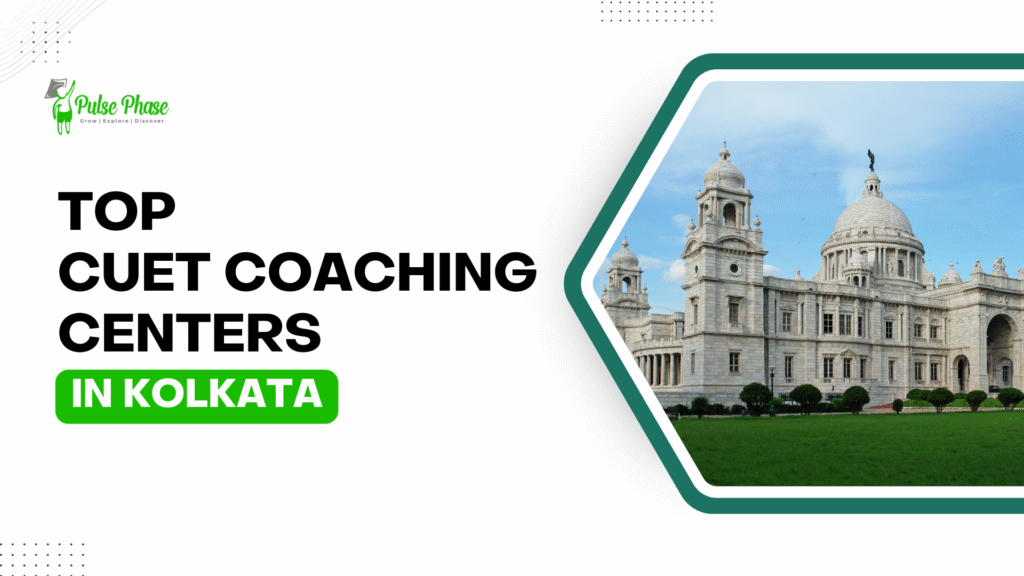UPSC exam which is considered one of the hardest exams in India has 48 optional subjects Physics Optional Books for IAS. Aspirants can choose their subject among them. Physics is a science-related subject which is included among them. An aspirant who is willing to participate in this physics optional exam must have an understanding of the syllabus and the subject matter including the concepts and equations.
Books for Physics Optional for UPSC IAS Mains
Physics is an optional subject in upsc exam which is selected by a lot of students including people from Engineering and non engineering backgrounds. However, it would require hard work by a non engineering student to crack the exam in one go. Physics Optional Books For IAS can be very helpful in getting a grip on this subject. There are a lot of physics optional books for upsc written by both Indian and foreign writers which are available in the market. Here are some of the best physics optional books for upsc that you could study for the exam.
Physics Optional Booklist for Paper 1
• EM Theory -Chopra&Agarwal/Satya Prakash
• Physics Vol I&II by David Halliday and Resnick
• Optics – Brijlal & Subramanyam, B.S. Agarwal, Ajoy & Ghatak
• Properties of Matter – B. Aggarwal
• Solid State Physics -Kittel
• Special Relativity-R.Resnick -Gupta & Goyal
• A Dictionary of Physics – Goldstein
• A Textbook of Sound – Khanna & Bedi
• Advanced Level Physics – Nelkon & Parker
• Any fundamental book on electrical engineering like B.L Theraja (Vol 1) or Vincent Del Toro
• Classical Mechanism -Gupta, Kumar & Sharma – Takewale & Puranik -H.Goldstein
• Electricity & Magnetism: D.C. TAyal, B.S. Agarwal, Griffith
• Introduction of Electrodynamics – David Griffiths
Physics Optional Booklist for Paper 2
• Thermal Physics – P.K Chakraborty – Satya Prakash, Singhal & Agarwal
• Thermal Physics – Singal, Agarwal & Prakash, B.S. Agarwal, Shah & Srivastava
• University Physics – Zemansky
• Wave/Spl.Relatively – D.S. Mathur/Kleppner Kolenkow
• Waves and Oscillations – Brijlal & Subramanyam, B.S. Agarwal
• Atomic & Molecular Spectra -Rajkumar
• Atomic Physics – J. B. RajanConcept of Modern Physics – Arthur Beiser
• Electronics – Millman & Halkias, S. Ramnam, Ryder or Bolstead, Malvina
• Electronics -Allen Mottershead
• Fundamental of Magnetism electricity – D.N. Vasudeva
• Quantum Mechanics – A Ghatak
• Quantum Mechanics -Ghatak & Lokanathan
• Quantum Physics- Resnick & Eisberg
• Statistical Physics -B.B laud
• Mechanics – D.S. Mathur, B.S. Agarwal
• Mechanics – Kleppner & Kolenkow -D.S. Mathur
• Modern Physics – A Beiser (Concepts of modern physics), S.L. Gupta, B.S. Agarwal, J.B. Rajan
• Nuclear Physics – D.C. Tayal
• Nuclear Physics -S.B Patel
• Optics-Ajoy Ghatak-B.S. Agarwal
Physics optional paper 1
1 syllabus
- Mechanics of Particles
- Mechanics of Rigid Bodies
- Mechanics of Continuous Media
- Special Relativity
2. Waves and Optics:
- Waves
- Geometrical Optics
- Interference
- Diffraction
- e. Polarization and Modern Optics
3. Electricity and Magnetism:
- Electrostatics and Magnetostatics: Laplace and Poisson equations in electrostatics and their applications; Energy of a system of charges, multipole expansion of scalar potential; Method of images1 and its applications; Potential and field due to a dipole, force and torque on a dipole in an external field; Dielectrics, polarization; Solutions to boundary-value problems-conducting and dielectric spheres in a uniform electric field; Magnetic shell, uniformly magnetized sphere; Ferromagnetic materials, hysteresis, energy loss.
- Current Electricity: Kirchhoff’s laws and their applications; Biot-Savart law, Ampere’s law, Faraday’s law, Lenz’ law; Self-and mutual-inductances; Mean and r m s values in AC circuits; DC and AC circuits with R, L and C components; Series and parallel resonances; Quality factor; Principle of transformer.
- Electromagnetic Waves and Blackbody Radiation: Displacement current and Maxwell’s equations; Wave equations in vacuum, Poynting theorem; Vector and scalar potentials; Electromagnetic field tensor, covariance of Maxwell’s equations;
Wave equations in isotropic dielectrics, reflection and refraction at the boundary of two dielectrics; Fresnel’s relations; Total internal reflection; Normal and anomalous dispersion; Rayleigh scattering; Blackbody radiation and Planck’s radiation law, Stefan – Boltzmann law, Wien’s displacement law and Rayleigh-Jeans’ law.
4. Thermal and Statistical Physics:
- Thermodynamics: Laws of thermodynamics, reversible and irreversible processes, entropy; Isothermal, adiabatic, isobaric, isochoric processes and entropy changes; Otto and Diesel engines, Gibbs’ phase rule and chemical potential; van der Waals equation of state of a real gas, critical constants;
Maxwell-Boltzman distribution of molecular velocities, transport phenomena, equipartition and virial theorems; Dulong-Petit , Einstein, and Debye’s theories of specific heat of solids; Maxwell relations and applications ; Clausius- Clapeyron equation; Adiabatic demagnetisation, Joule-Kelvin effect and liquefaction of gases.
- Statistical Physics: Macro and micro states, statistical distributions, Maxwell-Boltzmann, Bose-Einstein and Fermi-Dirac distributions, applications to specific heat of gases and blackbody radiation; Concept of negative temperatures.
Physics optional paper 2 syllabus
1. Quantum Mechanics:
- Wave-particle duality; Schrodinger equation and expectation values; Uncertainty principle; Solutions of the one-dimensional Schrodinger equation for a free particle (Gaussian wave-packet), particle in a box, particle in a finite well, linear harmonic oscillator;
Reflection and transmission by a step potential and by a rectangular barrier; Particle in a three dimensional box, density of states, free electron theory of metals; Angular momentum; Hydrogen atom; Spin half particles, properties of Pauli spin matrices.
2. Atomic and Molecular Physics:
- Stern-Gerlach experiment, electron spin, fine structure of hydrogen atom; L-S coupling, J-J coupling; Spectroscopic notation of atomic states; Zeeman effect; Franck Condon principle and applications; Elementary theory of rotational, vibrational and electronic spectra of diatomic molecules;
Raman effect and molecular structure; Laser Raman spectroscopy; Importance of neutral hydrogen atom, molecular hydrogen and molecular hydrogen ion in astronomy; Fluorescence and Phosphorescence; Elementary theory and applications of NMR and EPR; Elementary ideas about Lamb shift and its significance.
3. Nuclear and Particle Physics:
- Basic nuclear properties-size, binding energy, angular momentum, parity, magnetic moment; Semi-empirical mass formula and applications, mass parabolas; Ground state of deuteron, magnetic moment and non-central forces;
Meson theory of nuclear forces; Salient features of nuclear forces; Shell model of the nucleus – successes and limitations; Violation of parity in beta decay; Gamma decay and internal conversion; Elementary ideas about Mossbauer spectroscopy;
Q-value of nuclear reactions; Nuclear fission and fusion, energy production in stars; Nuclear reactors. Classification of elementary particles and their interactions ; Conservation laws ; Quark structure of hadrons; Field quanta of electroweak and strong interactions; Elementary ideas about unification of forces; Physics of neutrinos.
4. Solid State Physics, Devices and Electronics:
- Crystalline and amorphous structure of matter; Different crystal systems, space groups; Methods of determination of crystal structure; X-ray diffraction, scanning and transmission electron microscopies;
Band theory of solids – conductors, insulators and semiconductors; Thermal properties of solids, specific heat, Debye theory; Magnetism: dia para and ferromagnetism;
Elements of superconductivity, Meissner effect, Josephson junctions and applications; Elementary ideas about high temperature superconductivity.
Intrinsic and extrinsic semiconductors; p-n-p and n-p-n transistors; Amplifiers and oscillators; Op-amps; FET, JFET and MOSFET; Digital electronics-Boolean identities, De Morgan’s laws, logic gates and truth tables; Simple logic circuits; Thermistors, solar cells; Fundamentals of microprocessors and digital computers. Physics is selected as an optional subject by a large number of students in upsc exam. It is mainly selected by people from Engineering backgrounds. Many students find physics as an Interesting subject to study. Cracking the physics optional upsc exam is not a tough job, it’s not easy either. It would require hard work and consistency in studies. A preparation strategy matters a lot for subjects like physics. If you are consistent and determined, passing physics would be an easy job.
Read More:-




